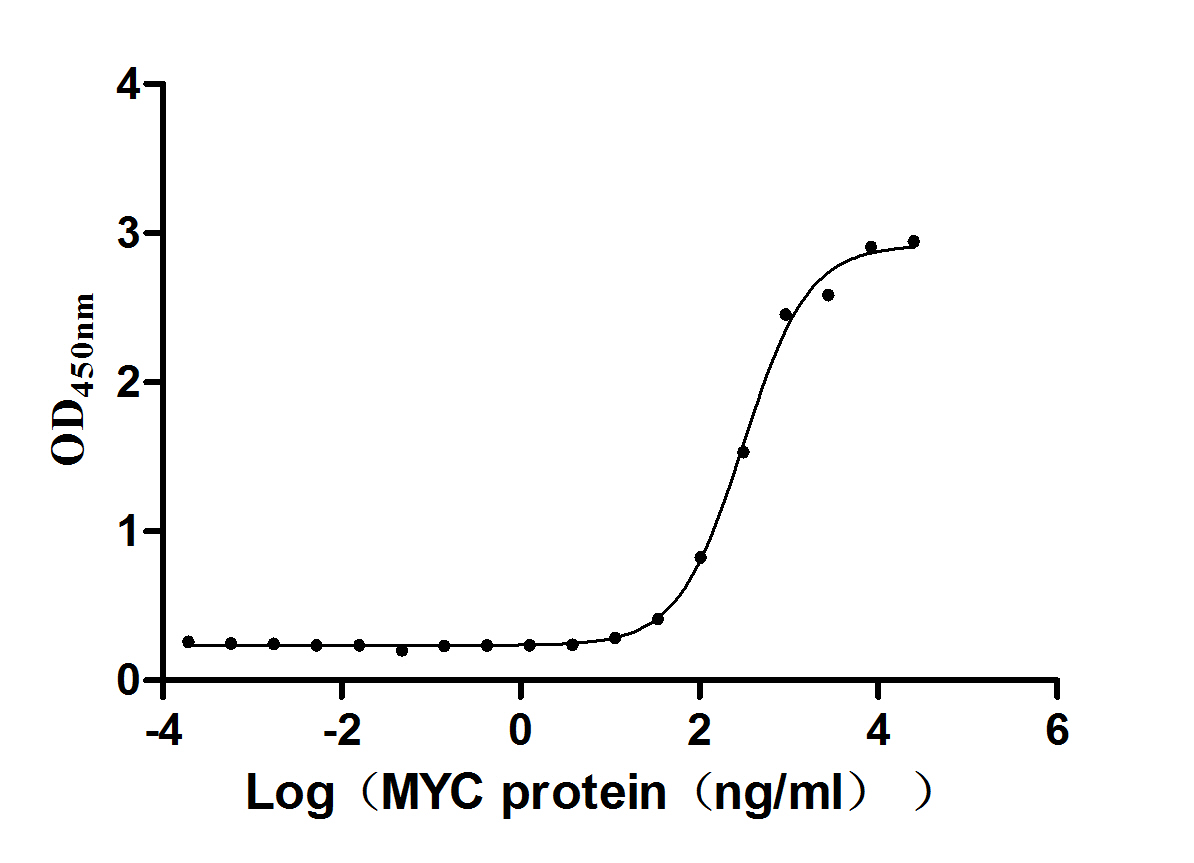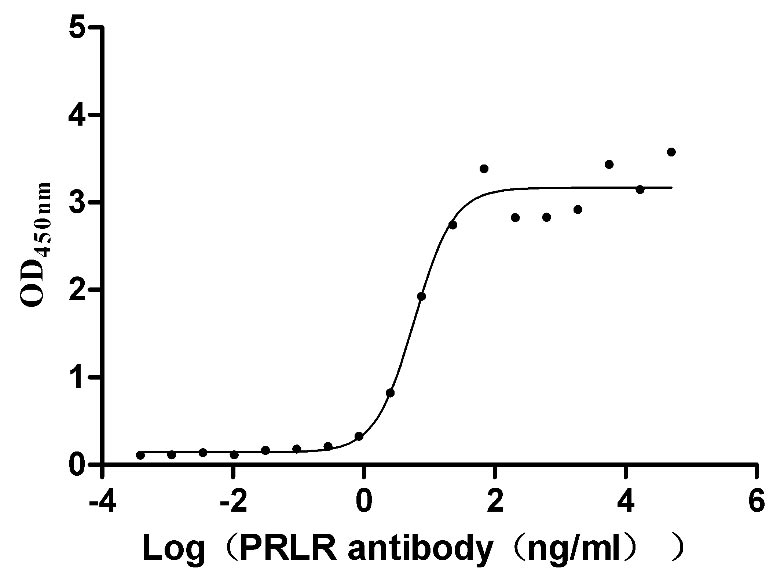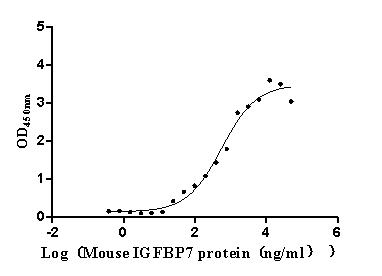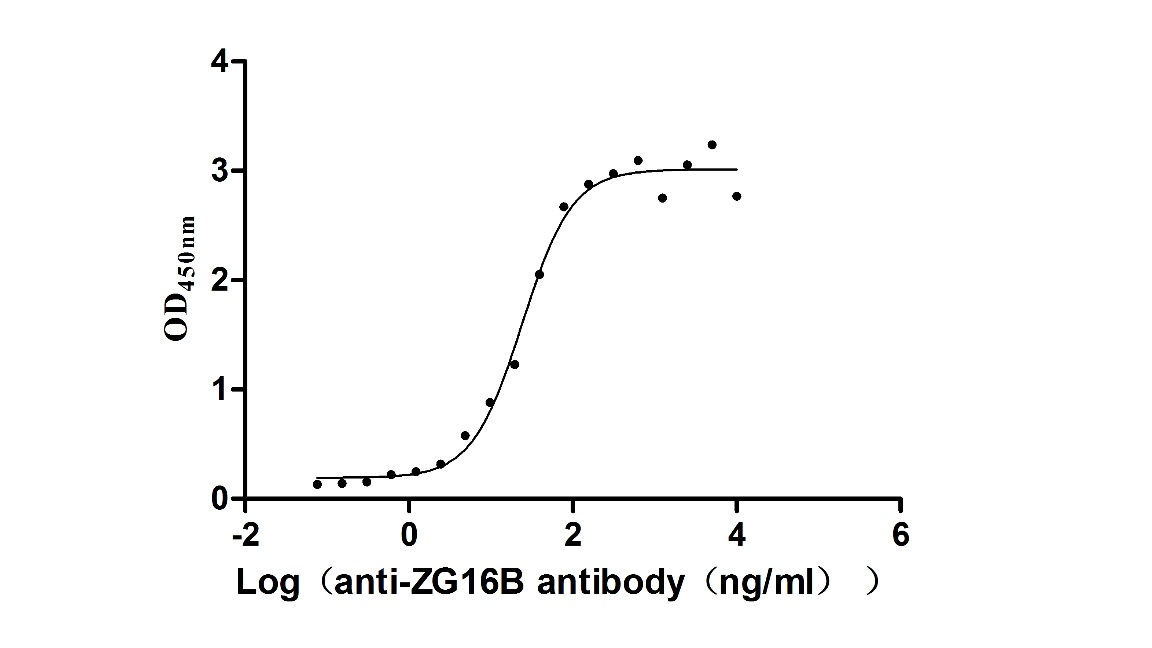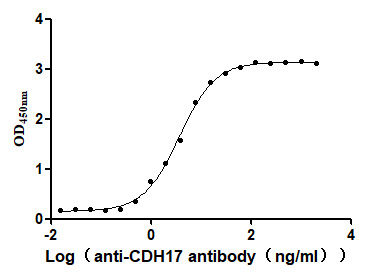Recombinant Mouse Protein lifeguard 2 (Faim2), partial
-
中文名稱:小鼠Faim2重組蛋白
-
貨號:CSB-YP818316MO1
-
規(guī)格:
-
來源:Yeast
-
其他:
-
中文名稱:小鼠Faim2重組蛋白
-
貨號:CSB-EP818316MO1
-
規(guī)格:
-
來源:E.coli
-
其他:
-
中文名稱:小鼠Faim2重組蛋白
-
貨號:CSB-EP818316MO1-B
-
規(guī)格:
-
來源:E.coli
-
共軛:Avi-tag Biotinylated
E. coli biotin ligase (BirA) is highly specific in covalently attaching biotin to the 15 amino acid AviTag peptide. This recombinant protein was biotinylated in vivo by AviTag-BirA technology, which method is BriA catalyzes amide linkage between the biotin and the specific lysine of the AviTag.
-
其他:
-
中文名稱:小鼠Faim2重組蛋白
-
貨號:CSB-BP818316MO1
-
規(guī)格:
-
來源:Baculovirus
-
其他:
-
中文名稱:小鼠Faim2重組蛋白
-
貨號:CSB-MP818316MO1
-
規(guī)格:
-
來源:Mammalian cell
-
其他:
產(chǎn)品詳情
-
純度:>85% (SDS-PAGE)
-
基因名:Faim2
-
Uniprot No.:
-
別名:Faim2; Kiaa0950; Lfg; Lfg2; Nmp35; Protein lifeguard 2; Fas apoptotic inhibitory molecule 2; Neural membrane protein 35
-
種屬:Mus musculus (Mouse)
-
蛋白長度:Partial
-
蛋白標簽:Tag?type?will?be?determined?during?the?manufacturing?process.
The tag type will be determined during production process. If you have specified tag type, please tell us and we will develop the specified tag preferentially. -
產(chǎn)品提供形式:Lyophilized powder
Note: We will preferentially ship the format that we have in stock, however, if you have any special requirement for the format, please remark your requirement when placing the order, we will prepare according to your demand. -
復(fù)溶:We recommend that this vial be briefly centrifuged prior to opening to bring the contents to the bottom. Please reconstitute protein in deionized sterile water to a concentration of 0.1-1.0 mg/mL.We recommend to add 5-50% of glycerol (final concentration) and aliquot for long-term storage at -20℃/-80℃. Our default final concentration of glycerol is 50%. Customers could use it as reference.
-
儲存條件:Store at -20°C/-80°C upon receipt, aliquoting is necessary for mutiple use. Avoid repeated freeze-thaw cycles.
-
保質(zhì)期:The shelf life is related to many factors, storage state, buffer ingredients, storage temperature and the stability of the protein itself.
Generally, the shelf life of liquid form is 6 months at -20°C/-80°C. The shelf life of lyophilized form is 12 months at -20°C/-80°C. -
貨期:Delivery time may differ from different purchasing way or location, please kindly consult your local distributors for specific delivery time.Note: All of our proteins are default shipped with normal blue ice packs, if you request to ship with dry ice, please communicate with us in advance and extra fees will be charged.
-
注意事項:Repeated freezing and thawing is not recommended. Store working aliquots at 4°C for up to one week.
-
Datasheet :Please contact us to get it.
相關(guān)產(chǎn)品
靶點詳情
-
功能:Antiapoptotic protein which protects cells uniquely from Fas-induced apoptosis. Regulates Fas-mediated apoptosis in neurons by interfering with caspase-8 activation. Plays a role in cerebellar development by affecting cerebellar size, internal granular layer (IGL) thickness, and Purkinje cell (PC) development.
-
基因功能參考文獻:
- that FAIM2 is an intrinsic neuroprotective factor activated by stress in photoreceptors and delays FAS-mediated photoreceptor apoptosis PMID: 28708137
- Increased degeneration of dopaminergic neurons was found in animals with Faim2 deficiency. PMID: 27638043
- MiR-3202 can promote EC apoptosis in hyperglycemic conditions, which demonstrated that EC apoptosis induced by high-glucose conditions partly depends on miR-3202 targeting FAIM2. PMID: 28228635
- LFG plays a role in protecting T cells from apoptosis during antiviral immune response. PMID: 26565411
- Data suggest Faim2/LFG (lifeguard protein) protects against FasL-/Fas ligand-induced apoptosis by down-regulating calcium release from endoplasmic reticulum in cortical neurons. PMID: 26582200
- In Faim2-deficient mice, there was increased hippocampal cell death during acute bacterial meningitis. PMID: 24335530
- Expression of Faim2 is triggered, at least in part, by Fas-receptor activation and subsequent ERK signaling. PMID: 23029562
- mechanism of action of LFG as an inhibitor of the Fas pathway and evidence of the neuroprotective role of LFG in cerebellar granule neurons and Purkinje cells in an organotypic cerebellar culture system PMID: 21957071
- This study demonistrated that lack of Faim2 caused an increase in susceptibility to combined oxygen-glucose deprivation in primary neurons as well as in caspase-associated cell death, stroke volume, and neurological impairment after cerebral ischemia. PMID: 21209208
- LFG is an endogenous inhibitor of FasL-mediated neuronal death detected in lipid rafts microdomains, and it mediates the FasL resistance of CNS differentiated neurons PMID: 17635665
顯示更多
收起更多
-
亞細胞定位:Cell membrane; Multi-pass membrane protein. Membrane raft. Cell junction, synapse, postsynaptic cell membrane.
-
蛋白家族:BI1 family, LFG subfamily
-
組織特異性:Brain. Highly expressed in cerebellum, also found in cortex, olfactory bulb, and hippocampus.
-
數(shù)據(jù)庫鏈接:
Most popular with customers
-
Recombinant Human papillomavirus type 16 Protein E7 (E7) (Active)
Express system: E.coli
Species: Human papillomavirus type 16
-
Recombinant Mouse Prolactin receptor (Prlr), partial (Active)
Express system: Mammalian cell
Species: Mus musculus (Mouse)
-
Recombinant Mouse Complement component C1q receptor (Cd93), partial (Active)
Express system: Mammalian cell
Species: Mus musculus (Mouse)
-
Recombinant Macaca fascicularis zymogen granule protein 16 homolog B (ZG16B) (Active)
Express system: Mammalian cell
Species: Macaca fascicularis (Crab-eating macaque) (Cynomolgus monkey)
-
Recombinant Human Cadherin-17 (CDH17), partial (Active)
Express system: Mammalian cell
Species: Homo sapiens (Human)


